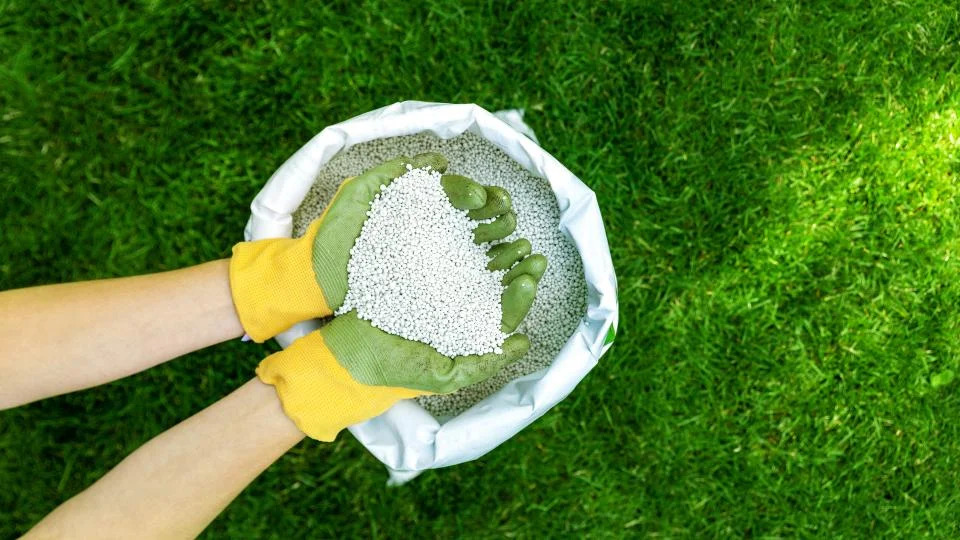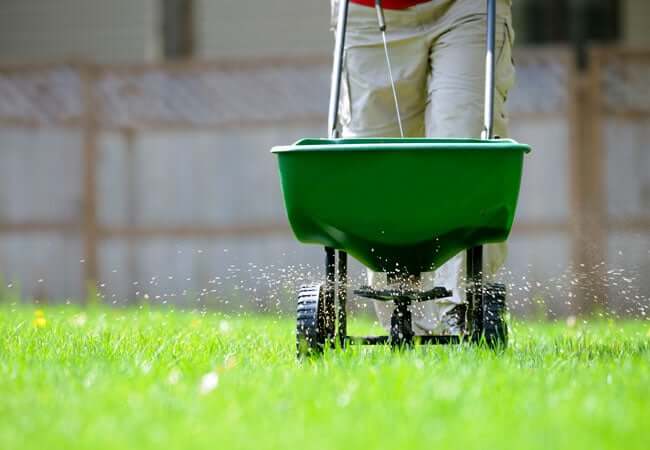
Nutrition promotes healthy growth, improves appearance, and strengthens turf
As the warm days of summer give way to the crisp, cool air of autumn, it’s time to turn our attention to an integral aspect of lawn care: nutrition. Just like we bundle up to prepare for the colder months, your lawn needs a little extra nourishment to guarantee a healthy and thriving resurgence in spring. Autumn lawn nutrition is crucial, as the right nutrients can help your grass develop strong roots, improve resilience against winter stresses, and set the stage for lush growth when spring arrives. So, what nutritional elements should you focus on this autumn? Let’s dig in!
Why Autumn Lawn Nutrition is Crucial
The transition from summer to autumn signals a fundamental change in your lawn. The temperatures drop, and the days shorten, which can stress your grass. Grass plants shift their energy towards rooting, making it essential to ensure they have the necessary nutrients. Robust root development is vital as it helps the grass survive the winter months when growth slows down significantly. Healthy roots not only cushion against frost damage but also ensure your grass will bounce back effectively come spring.
Key Nutritional Elements for Autumn
To provide the best care for your lawn, you should focus on four primary nutritional elements: nitrogen, phosphorus, potassium, and micronutrients. Let’s explore each of these in detail.
- Nitrogen
Nitrogen is often hailed as the star of lawn nutrition because it promotes lush, green growth. In autumn, the grass requires nitrogen to recover from the stress of summer heat. It helps stimulate foliage development, ensuring a thicker and healthier lawn that can better compete with weeds and pests.
When applying nitrogen ahead of winter, choose slow-release fertilizers designed for autumn use. These provide a gradual supply of nutrients, enabling your grass to utilise them efficiently without excessive top growth that could lead to winter damage. Ideally, aim for around 1-2 pounds of nitrogen per 1,000 square feet during this period.
- Phosphorus
Phosphorus plays a vital role in root development and energy transfer within the plant. By enhancing root growth, phosphorus helps your lawn build a sturdy foundation to withstand winter conditions.
While many fertilisers contain phosphorus, it’s essential to conduct a soil test before application. This will help identify any existing phosphorus levels in your soil, allowing you to adjust your fertiliser choices accordingly. If your soil is deficient in phosphorus, applying a fertiliser with a higher middle number in its N-P-K ratio can dramatically improve root health and prepare your lawn for the cold months ahead.
- Potassium
Potassium is often considered the protector of your lawn. It strengthens grass against diseases, drought, and winter stress, ensuring resilience throughout the colder months. A healthy potassium level helps enable the grass to manage its water use efficiently, which is crucial when the temperatures drop.
Look for potassium-rich fertilisers when feeding your lawn in the autumn. Like nitrogen, potassium is best applied in slow-release forms to support long-term health. Aim for about 2-3 pounds of potassium per 1,000 square feet during late summer to early autumn.
- Micronutrients
Although required in smaller quantities, micronutrients such as iron, magnesium, and manganese are essential for overall grass health. They play various roles, from chlorophyll production to disease resistance. For instance, iron promotes darker green foliage, while magnesium is crucial for photosynthesis.
To ensure your lawn is getting these valuable elements, consider using a balanced fertiliser that includes micronutrients or applying a micronutrient supplement as needed.

Use specialist equipment for even distribution and to avoid overdosing
How to Apply Autumn Lawn Nutrition
- Soil Testing
Before diving into fertilisation, it’s wise to conduct a soil test. Soil testing allows you to pinpoint any nutrient deficiencies and helps direct your fertilisation efforts more effectively. Many garden centres offer testing kits, or you can seek professional services to determine the exact needs of your lawn.
- Choosing the Right Products
With a clearer picture of your lawn’s nutritional needs, you can choose the appropriate fertiliser. Options abound, from granular to liquid formulations. Granular fertilisers tend to have a slower release, which can be advantageous for autumn applications, while liquid options offer quick absorption and can be effective for immediate nutrient needs.
- Best Practices for Application
Timing is everything! Apply your fertiliser when the weather is mild, preferably before the first frost but after the summer heat has subsided. Following these steps can help ensure successful nutrient uptake:
- Mow your Lawn: Keep your grass at an appropriate height before fertilisation, typically around 2.5 to 3 inches, to avoid scalping, which can stress the plants.
- Spread Evenly: Use a broadcast or drop spreader for uniform distribution to avoid uneven fertilisation, which can lead to more significant issues down the line.
- Water After Application: Lightly water your lawn after applying fertiliser. This aids in nutrient absorption and prevents lawn burn from concentrated fertiliser.
Benefits of Autumn Lawn Nutrition
- Stronger Root Systems
By focusing on nutrition in autumn, you’re giving your grass the chance to establish deeper, more resilient roots. This makes it significantly less vulnerable to winter stresses like frost and drought.
- Improved Soil Health
An autumn feeding regime promotes not only grass health but also improves your soil structure. Healthier soil leads to better water drainage and enhanced microbial activity, which can support plant health overall.
- Greener Spring Growth
Imagine stepping out onto a vibrant, lush lawn in spring. A well-nourished lawn in autumn sets the stage for a vigorous resurgence when warmer weather returns, providing an inviting outdoor space for you and your family.

You’ll notice at the difference once nutrition is applied seasonally
Conclusion
As autumn arrives, remember that your lawn’s nutritional needs change. Proper autumn lawn nutrition is essential for preparing your lawn for winter while ensuring a robust return in spring. With a thoughtful approach to nitrogen, phosphorus, potassium, and micronutrients, you’ll cultivate a lawn that stands proud against winter’s challenges.
If you’re considering professional support for fertilisation, don’t hesitate to contact us. After all, a healthy lawn isn’t just a decoration; it’s an outdoor sanctuary for your family to enjoy. Start to think about how you want your lawn to be next year and ensure you have a lawn to be proud of all year round.

 Established 2016
Established 2016



